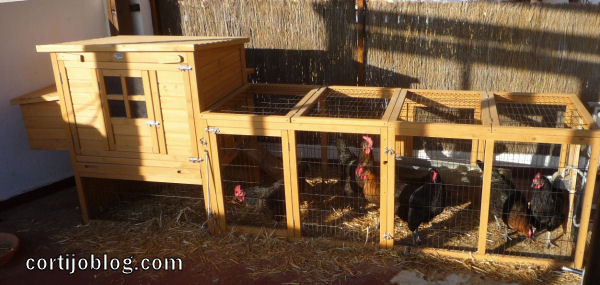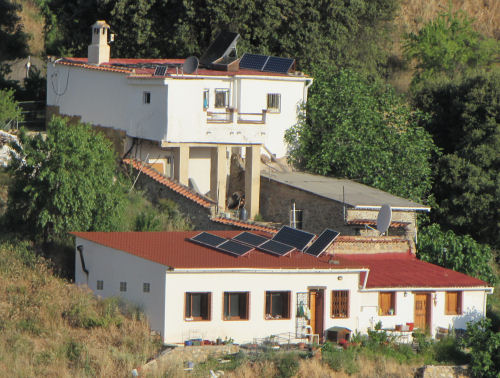From the end of December to April, we are at the coast in a city. We keep the chickens in a coop with a hen house and run on the top terrace.The same system could be used by anyone with just a few metres of free space even in a city.
I thought it would be interesting to work out the viability of keeping a few free-range chickens and selling the surplus eggs to friends and family. We want to answer these 3 questions:
How much does it cost?
Is there any profit?
Is it worthwhile?
Here are the results of our experiment:
Starting on 26th December 2013, we decided to sell our surplus eggs to friends. There are 7 chickens in a wooden henhouse and chicken run.
Details of experiment:
Duration: 52 days from 26th Dec 2013 -15th Feb 2014
Total eggs laid: 207
Expenses:
Chicken food:
14 euros for 25kg chicken food
7 euros for 14kg loose wheat
3 euros for a bale of straw
Total: 24 euros
Income:
The eggs were sold at slightly below the price of free range eggs in the supermarket.
The average price of the eggs was 1.30 euros for 6 medium eggs (54-63 grams), 1.50 euros for 6 large eggs (64-73 grams) and 1.70 euros for 6 extra large eggs (84-93 grams).
207 eggs were sold for 49 euros.
By now, all of the 4 new hens were laying medium-sized eggs and the older eggs were laying large-extra large eggs.
Profit: 25 euros
Profit per day: 48 cents
Infrastructure costs:
7 hens 56 euros. Three of the chickens were bought and four were raised from eggs. The cost of buying a laying hen is 8 euros per bird.
Chicken coop: 120 euros
The full infrastructure costs are 176 euros.
It would take an entire year to recoup the investment if the cost of the chickens and their coop is included.
Once the infrastructure costs have been covered, there would be a profit of 174 euros per year.
Conclusion:
Most people would not consider keeping chickens on a small scale to be economically viable if only the amount of work and the amount of financial gain is considered.
However, it seems to be worthwhile if you consider it to be a pleasant hobby.
There are other advantages which cannot be judged on financial terms and which override the purely commercial concerns and may explain why we continue to do it.
These are the following:
The taste and quality of the eggs is very high.
The chickens appear to be happy and much happier than commercially-reared birds.
A by-product of the chickens is highly nitrogenous manure which is very useful on the garden.
Happy chickens are amusing to watch.
We like the sounds they make.
Eggs are very easy to sell and most people are very happy to buy them even though they are more expensive than supermarket eggs.
The packaging (egg boxes) can be reused.
Keeping chickens also has a some negative aspects.
These are the following:
A chicken coop does not smell very good albeit for only a fairly small radius.
It would be unfeasible to spend money on vet’s fees for a chickens. If a bird has a health problem such as a prolapsed vent, it would be necessary to kill it humanely. Someone must be willing to do this.
If you raise the chicken from eggs, the male birds must be killed. This could be distressing for vegetarians.









